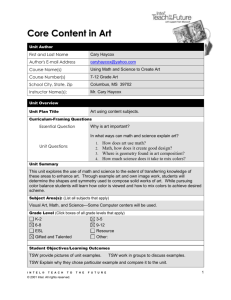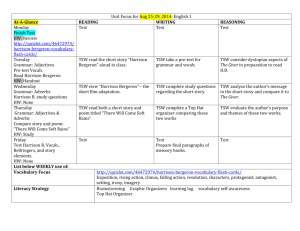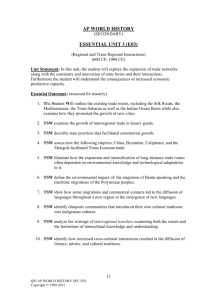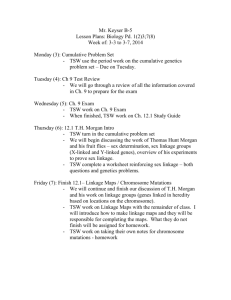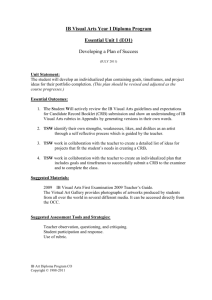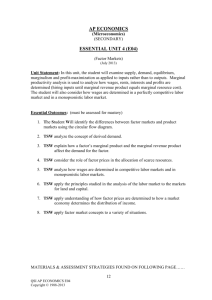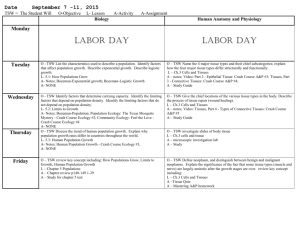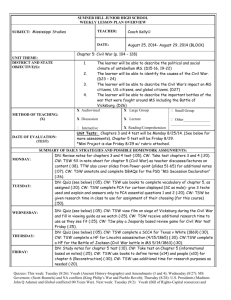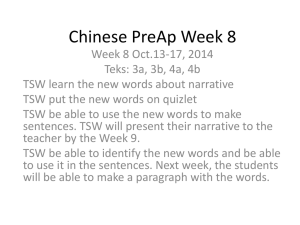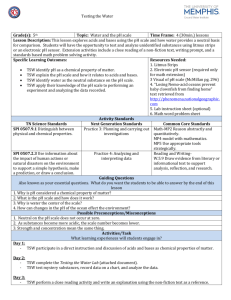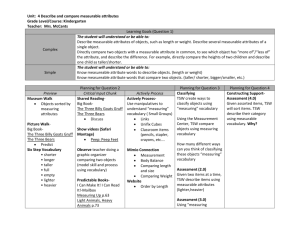Lesson 2 - What do plants need for survival
advertisement
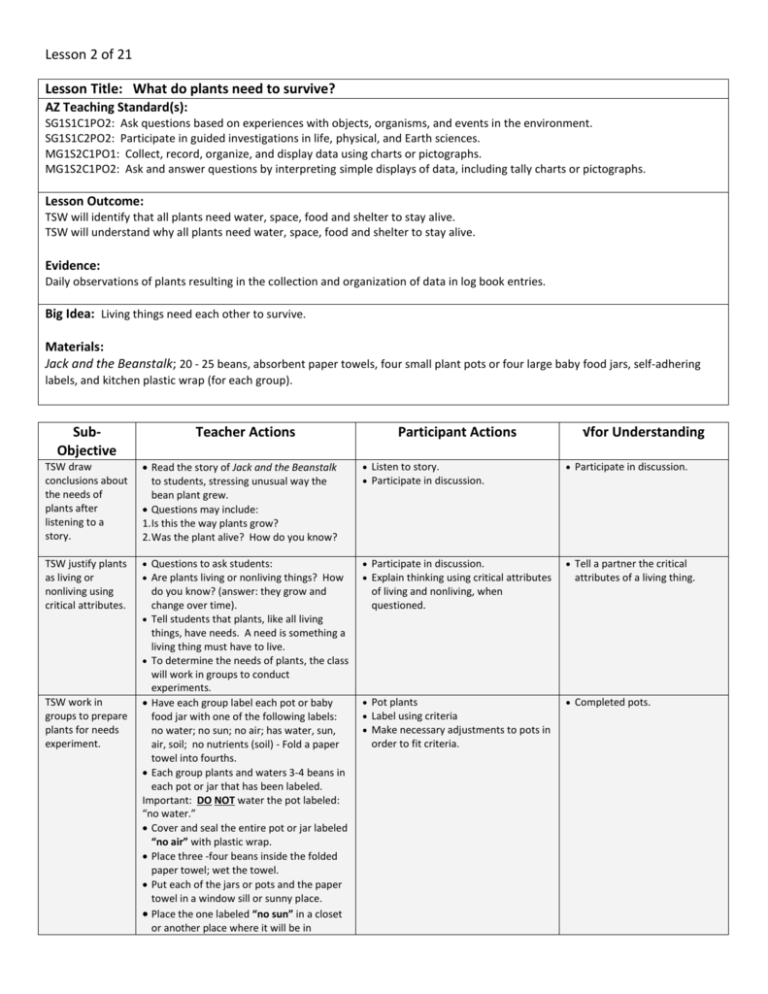
Lesson 2 of 21 Lesson Title: What do plants need to survive? AZ Teaching Standard(s): SG1S1C1PO2: Ask questions based on experiences with objects, organisms, and events in the environment. SG1S1C2PO2: Participate in guided investigations in life, physical, and Earth sciences. MG1S2C1PO1: Collect, record, organize, and display data using charts or pictographs. MG1S2C1PO2: Ask and answer questions by interpreting simple displays of data, including tally charts or pictographs. Lesson Outcome: TSW will identify that all plants need water, space, food and shelter to stay alive. TSW will understand why all plants need water, space, food and shelter to stay alive. Evidence: Daily observations of plants resulting in the collection and organization of data in log book entries. Big Idea: Living things need each other to survive. Materials: Jack and the Beanstalk; 20 - 25 beans, absorbent paper towels, four small plant pots or four large baby food jars, self-adhering labels, and kitchen plastic wrap (for each group). SubObjective Teacher Actions Participant Actions √for Understanding TSW draw conclusions about the needs of plants after listening to a story. Read the story of Jack and the Beanstalk to students, stressing unusual way the bean plant grew. Questions may include: 1. Is this the way plants grow? 2. Was the plant alive? How do you know? Listen to story. Participate in discussion. Participate in discussion. TSW justify plants as living or nonliving using critical attributes. Questions to ask students: Are plants living or nonliving things? How Participate in discussion. Explain thinking using critical attributes Tell a partner the critical TSW work in groups to prepare plants for needs experiment. do you know? (answer: they grow and change over time). Tell students that plants, like all living things, have needs. A need is something a living thing must have to live. To determine the needs of plants, the class will work in groups to conduct experiments. Have each group label each pot or baby food jar with one of the following labels: no water; no sun; no air; has water, sun, air, soil; no nutrients (soil) - Fold a paper towel into fourths. Each group plants and waters 3-4 beans in each pot or jar that has been labeled. Important: DO NOT water the pot labeled: “no water.” Cover and seal the entire pot or jar labeled “no air” with plastic wrap. Place three -four beans inside the folded paper towel; wet the towel. Put each of the jars or pots and the paper towel in a window sill or sunny place. Place the one labeled “no sun” in a closet or another place where it will be in attributes of a living thing. of living and nonliving, when questioned. Pot plants Label using criteria Make necessary adjustments to pots in order to fit criteria. Completed pots. darkness. TSW collect, record, organize and display data in science log book. The students observe the plants at approximately the same time every day. They make observations in their logs and chart and date the entries on the growth of each of the plants. Have students help in the construction of a class chart. When the plants have had time to grow, the students speculate about the needs of each plant. They give reasons for why the plants grew or not and what the plants needed. They also explain how they know that a plant needs all these things. no water day 1 day 2 day 3 day 4 day 5 no sun no air Daily observations. Collect and organize data. Review data and make speculations and/or predictions. no soil has water, sun, air, soil Individual log book entry. Class chart.

